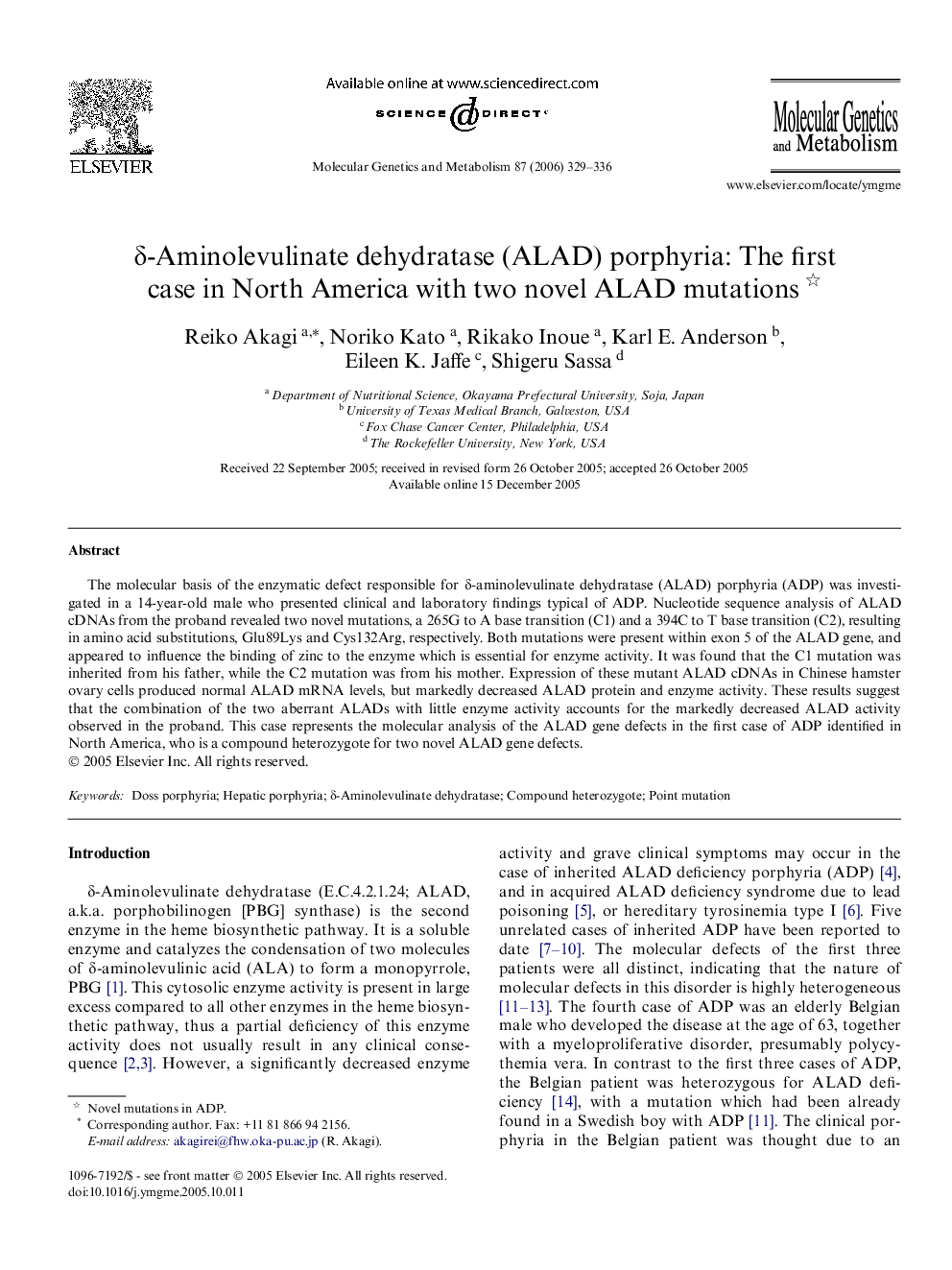| Article ID | Journal | Published Year | Pages | File Type |
|---|---|---|---|---|
| 1999324 | Molecular Genetics and Metabolism | 2006 | 8 Pages |
The molecular basis of the enzymatic defect responsible for δ-aminolevulinate dehydratase (ALAD) porphyria (ADP) was investigated in a 14-year-old male who presented clinical and laboratory findings typical of ADP. Nucleotide sequence analysis of ALAD cDNAs from the proband revealed two novel mutations, a 265G to A base transition (C1) and a 394C to T base transition (C2), resulting in amino acid substitutions, Glu89Lys and Cys132Arg, respectively. Both mutations were present within exon 5 of the ALAD gene, and appeared to influence the binding of zinc to the enzyme which is essential for enzyme activity. It was found that the C1 mutation was inherited from his father, while the C2 mutation was from his mother. Expression of these mutant ALAD cDNAs in Chinese hamster ovary cells produced normal ALAD mRNA levels, but markedly decreased ALAD protein and enzyme activity. These results suggest that the combination of the two aberrant ALADs with little enzyme activity accounts for the markedly decreased ALAD activity observed in the proband. This case represents the molecular analysis of the ALAD gene defects in the first case of ADP identified in North America, who is a compound heterozygote for two novel ALAD gene defects.
